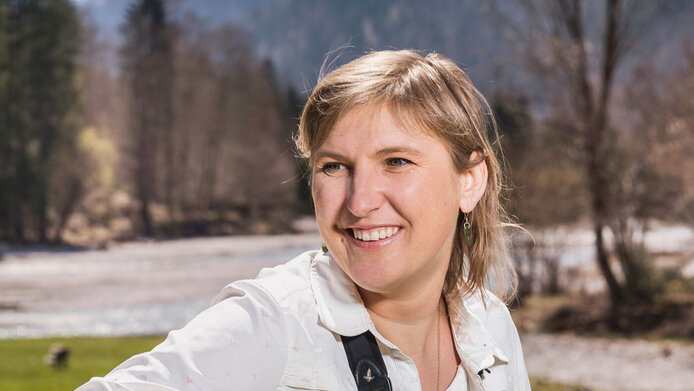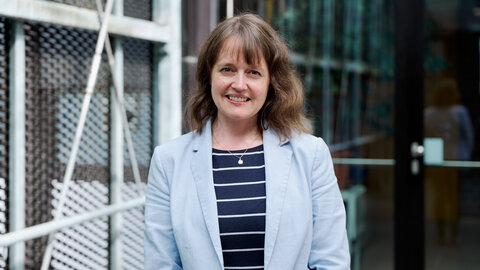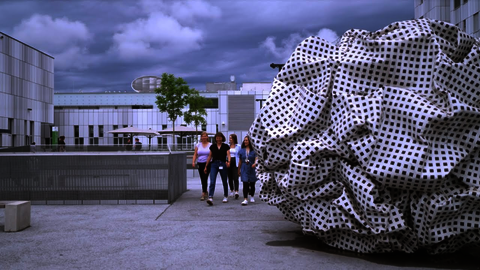How do humans impact animals’ search for food?

What are the questions you want to answer in your project?
Petra Sumasgutner: I want to find out which strategies raptors use to search for food, and what impact humans have on their foraging. The more we know about their foraging strategies, the easier it is to develop effective conservation measures.
Which data and methods do you use in your work?
Sumasgutner: I work with GPS data, and with data obtained by accelerometers, which are multiaxial acceleration sensors. They can be used to capture the direction of a raptor’s movement, as well as how it moves, when it feeds, and when it hunts. This is how we can take quantitative measurements of hunting and foraging strategies.
In ecology, the impact of infrastructure can often barely be distinguished from that of human activity. During the lockdowns in the course of the Corona pandemic, these factors were decoupled for the first time. That represents a great opportunity. In the past two years, I established the “Global Anthropause Raptor Research Network”. It currently bundles data that some 500 raptor researchers around the world collected during that period. At the moment, that includes three million data points from 135 GPS datasets collected by 65 research teams and 3,148 individuals. With the aid of machine learning, I am collating and analysing these data. In order to develop algorithms we can use to decode foraging strategies, I combine this global analysis with two detailed study designs – one for the category of predators, and one for scavengers.
What are they, specifically?
Sumasgutner: One study design centres on common ravens at the Konrad Lorenz Research Center in Upper Austria’s Almtal valley. Common ravens are important members of the group of scavengers, meaning that they are not active hunters, but instead specialise in finding animals brought down by predators such as bears or wolves, or also by humans (gut piles or roadkill). In this study design, I can use experiments to assess the impact of human behaviour on scavengers by simulating intrusions, e.g. by hikers, and analysing the ravens’ response. I will equip some 60 ravens with accelerometer sensors for this purpose.
The second analysis focuses on short-eared owls on Floreana Island in the Galápagos archipelago. There are plans to remove so-called invasive species introduced by humans – these include mice, rats and stray cats – from the island in 2023, as they pose a threat to the endemic fauna, such as the famous Darwin’s finches. The Galápagos short-eared owl is the only naturally occurring predator in this system, and has by now adapted to mainly hunting mice. I want to find out how its hunting and feeding behaviour will change when this prey spectrum is suddenly eliminated and the owls have to revert to their original, natural prey. I will equip some 50 owls with accelerometer sensors for this purpose.
Which research gap will you close with this project?
Sumasgutner: Raptors have been neglected so far. We know that humans have a negative impact, but we don’t know the exact effects of man-made environmental changes on their foraging systems. In the case of the owls in the Galápagos archipelago, for instance, we do not know yet how they will change their hunting and breeding behaviour when there are no more mice, nor how long it will take until the ecosystem has regenerated.
What role does the START Grant play in your research?
Sumasgutner: It means I can establish myself and my project independently in Austria. The major part of the funding will go towards salaries. I will hire a database manager who will collate, sort and process the data. I want to analyse the data in the Global Anthropause Raptor Research Network together with a postdoc. I want to work with PhD students on the research projects on short-eared owls and common ravens in order to also give young researchers an opportunity to establish themselves as scientists.
Are there scientists whom you consider role models?
Sumasgutner: Yes, there are several. One of them was ornithologist Anita Gamauf. She was my PhD advisor and mentor, and always supported me. When she passed away in 2018, she left a great gap that sometimes seems too large to fill. But I try. Another role model was raptor expert Leslie Brown, whose detailed observations of raptor behaviour inspired me, and who wrote seminal books on raptor research.
Petra Sumasgutner is a postdoc in the Department of Behavioural and Cognitive Biology at the Konrad Lorenz Research Center in Grünau in the Almtal valley. She completed teacher training in biology, environmental studies and French, and initiated the Vienna Kestrel Project in 2010. In 2014, she earned her doctorate in zoology at the University of Vienna. In the subsequent years, she conducted grant-funded research at the universities of Turku and Cape Town, and contributed to collaborative projects with the University of Montpellier, Lund University, the University of Glasgow and the University of Ulaanbaatar. Since 2020, she has worked and conducted research at the Konrad Lorenz Research Center of the University of Vienna.
About the project
In the project “Acceleration for Food”, Petra Sumasgutner uses acceleration sensors to investigate how animals’ foraging strategies are changing due to man-made environmental impacts. Using machine learning, she analyses datasets collected by raptor researchers during the lockdowns in the course of the Corona pandemic. The resulting algorithms are applied to datasets previously obtained from experimental tests.
The START Prize
The START Programme of the Austrian Science Fund FWF is aimed at outstanding young researchers, giving them the opportunity to plan their research over an extended period and with a high degree of financial security. It is endowed with up to EUR 1.2 million and is one of Austria’s most prestigious and most highly endowed awards alongside the Wittgenstein Award.





